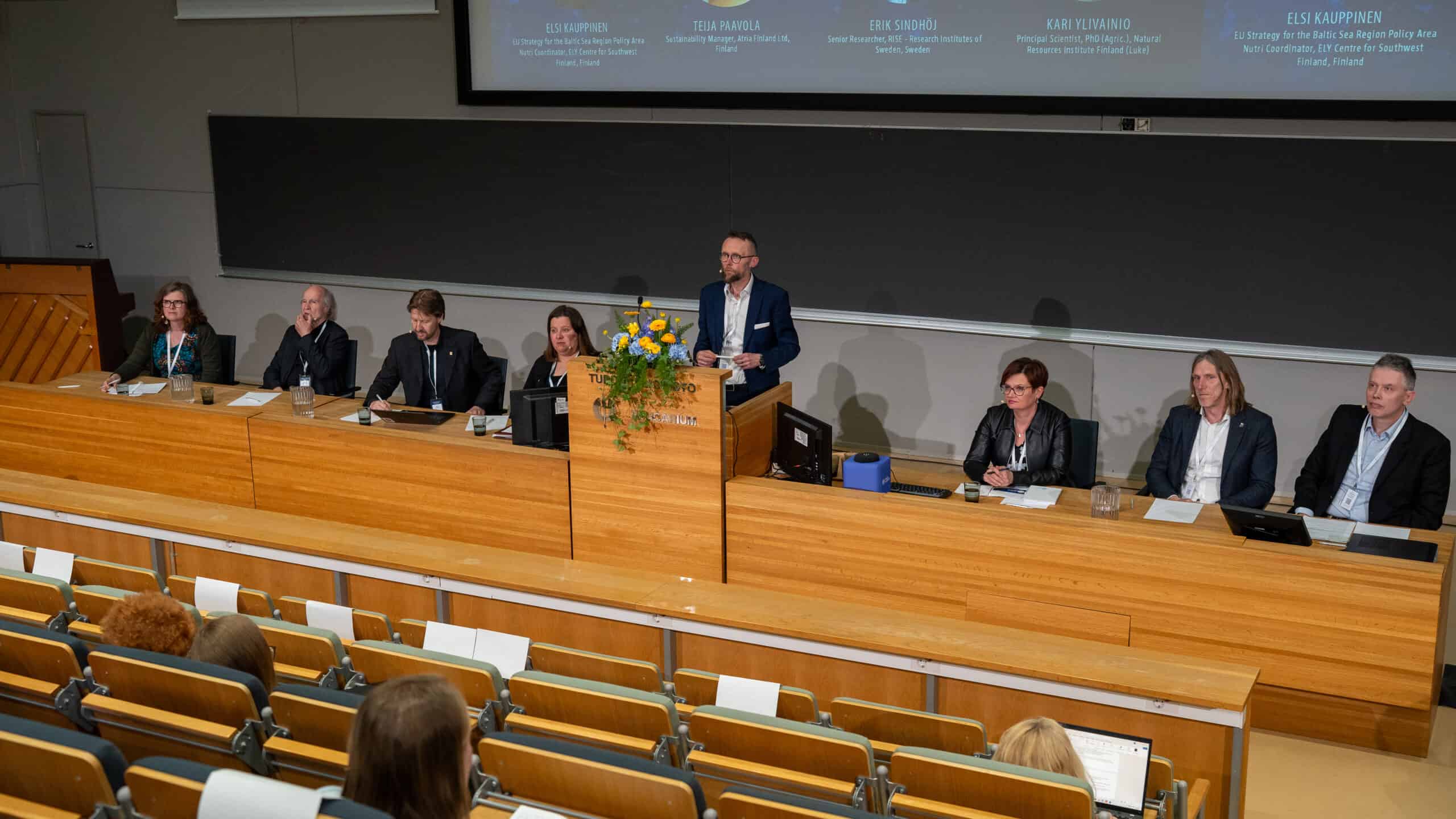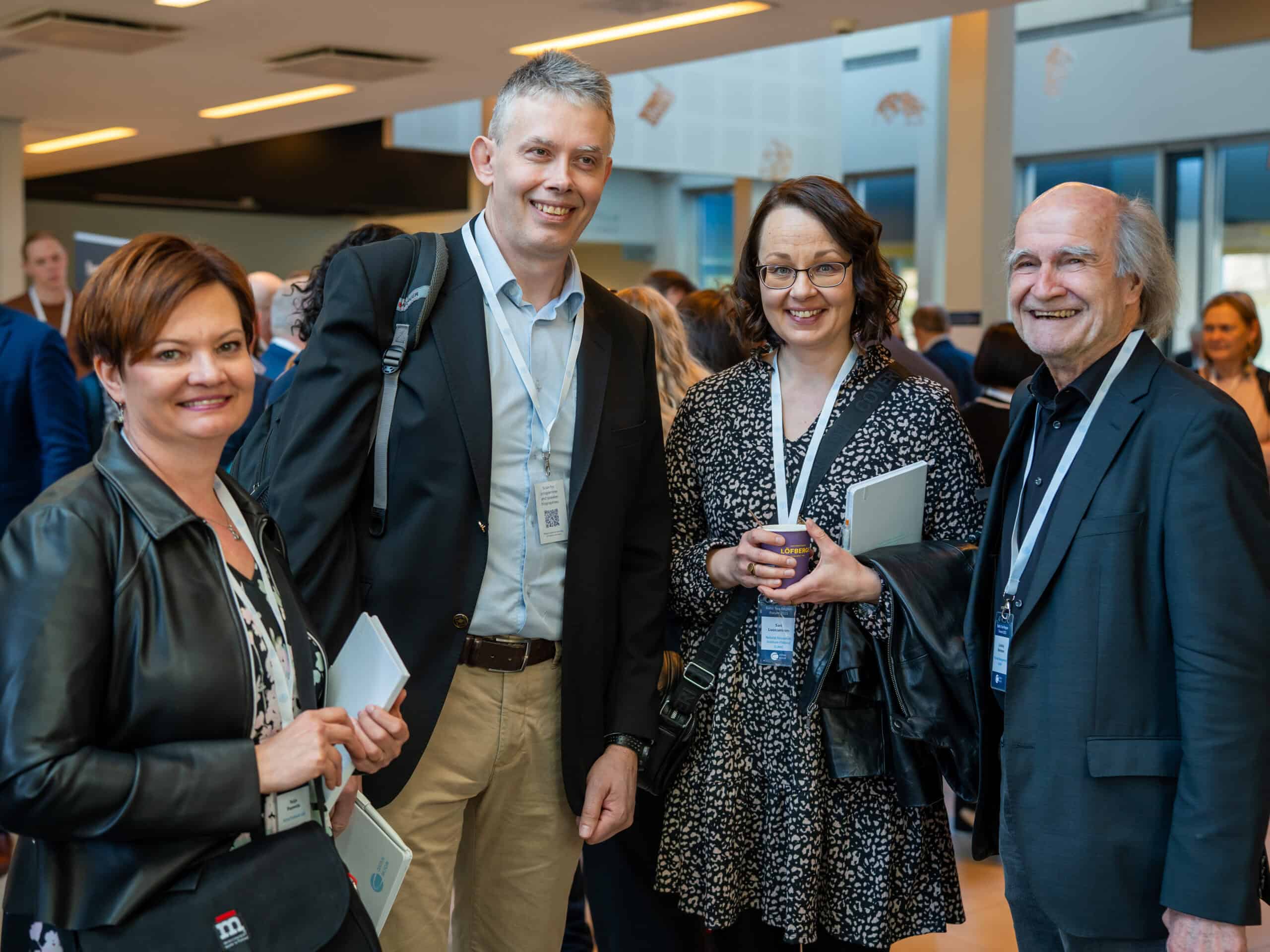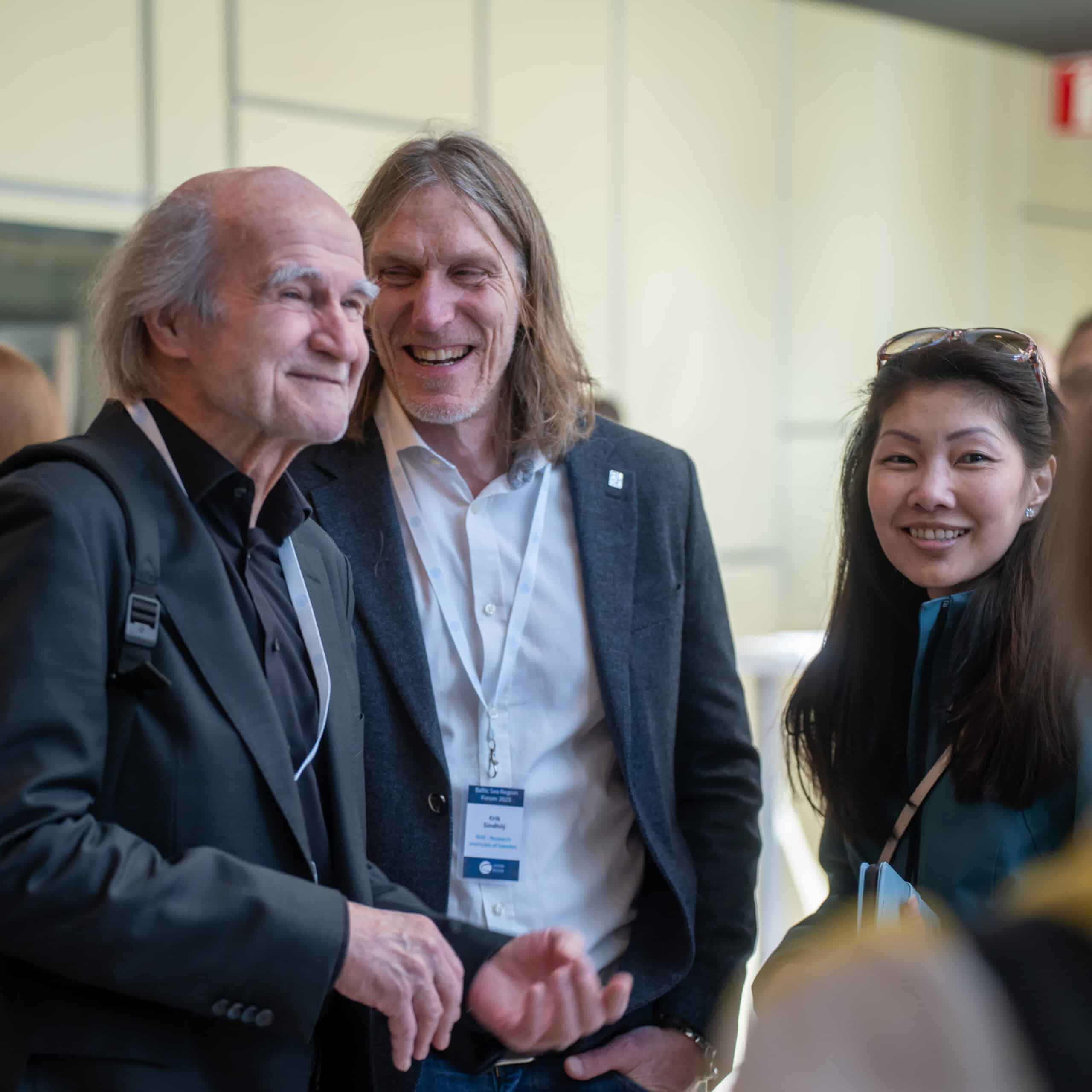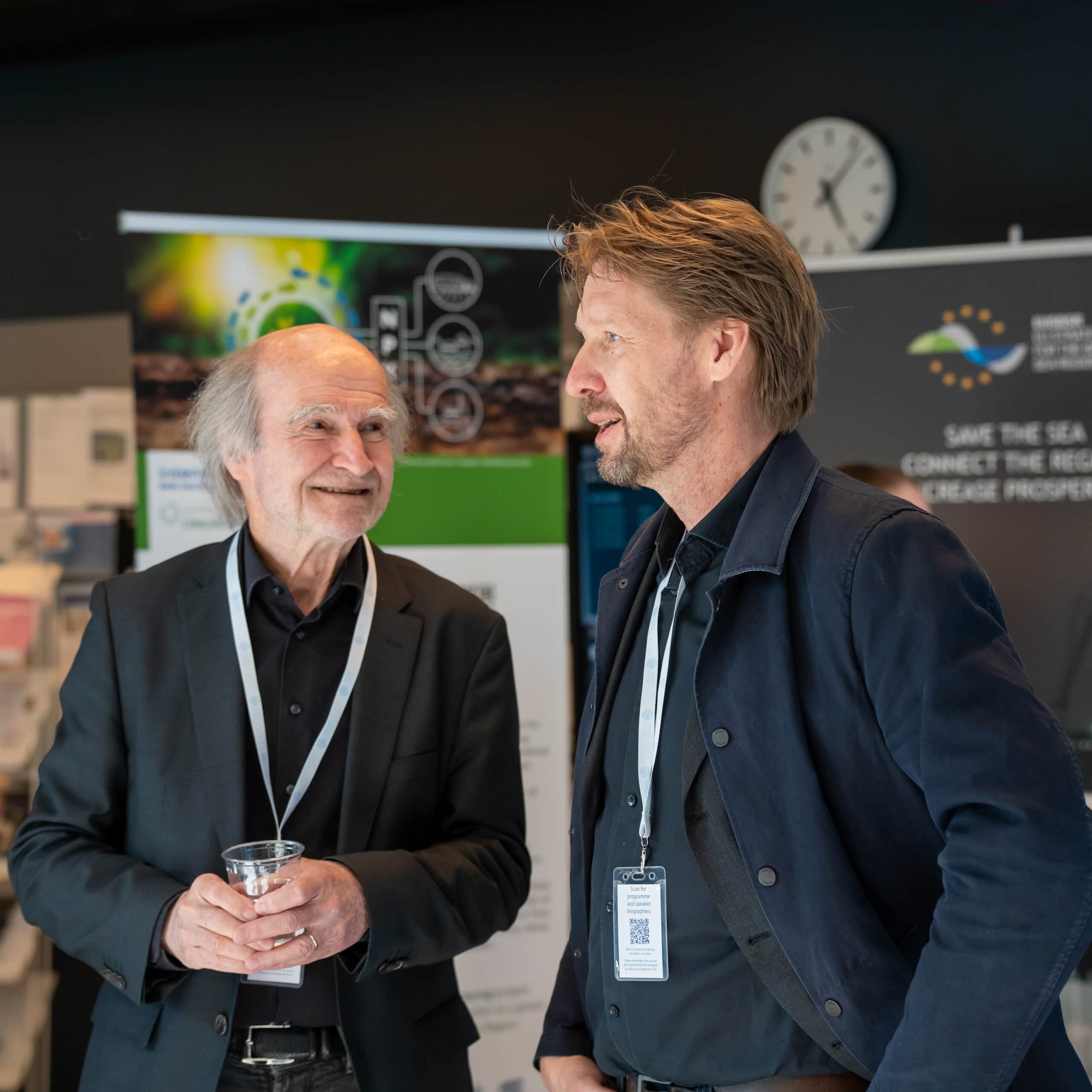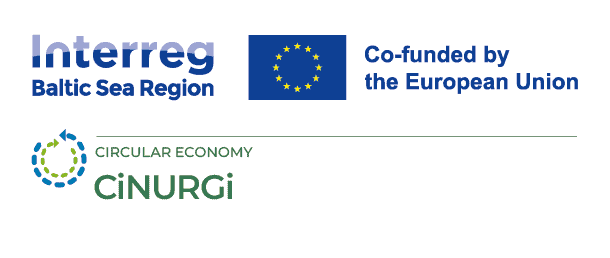
Reporting from Baltic Sea Region Forum: Scaling Up Nutrient Recycling — From Knowledge to Action
16 May 2025
Introducing nutrient recycling in the context of security and safety, was the topic discussed on Monday 12th of May at the Baltic Sea Region Forum themed Safe and Secure Baltic Sea. On the panel were Erik Sindhöj/RISE (CiNURGi); Elsi Kauppinen/ELY-centre Finland (EUSBSR PA Nutri); Eija Hagelberg/Ministry of Environment, Finland; Teija Paavola/Atria Finland Ltd; Ludwig Hermann/Proman Management GmbH; Mats Johansson/WWF Sweden and Kari Ylivainio/LUKE Natural Resources Institute Finland (Lex4Bio).
While nutrient management is often treated as a technical or environmental issue, the panellists agreed: it’s a societal challenge that demands systemic change, long-term commitment, and strong public-private cooperation. Nutrient recycling can be a pillar of sustainability, security and system change.
Nutrient recycling has slowly gained foothold in public discourse, with a definitive upswing when Russia’s aggression in Ukraine increased prices of mineral fertilizers with 400% and the market began to look for options. The geopolitical dimension of nutrient management is undeniable. Many fertilizers used in Europe are based on Russian fossil gas. The war in Ukraine highlighted this dependency, pushing fertilizer prices up and making green alternatives more attractive. Several speakers on the panel pointed to emerging innovations such as biogas-based fertilizers and green ammonia, which could offer regional and climate-resilient solutions.
Why Nutrient Recycling Matters
Currently, most of the nutrients applied in agriculture are lost. In Sweden, only one-third of added nitrogen ends up in food; the rest escapes into water bodies or the atmosphere, contributing to eutrophication and climate emissions. This inefficiency is a cost to both the economy and the environment. Recycling nutrients from waste streams, such as manure, sewage sludge, or food waste offers a solution to this inefficiency. It reduces nutrient loss, replaces imported mineral fertilizers, and supports local resource use. As Mats Johansson puts it, “It’s about moving from a fossil-dependent, linear system to a renewable, circular one”.
While scientific knowledge and technical solutions exist, panellists stressed that the bottleneck is implementation. Erik Sindhöj argued that nutrient recycling often costs more than conventional practices, creating a financial barrier for farmers and businesses. “Almost any form of nutrient recycling comes with a cost—someone has to carry it,” he said. “That’s why political leadership and incentives are essential.”
Elsi Kauppinen emphasized that nutrient recycling must also be safe for food production, echoing recent HELCOM assessments that place nutrient pollution and hazardous substances at similar levels of concern. A well-functioning nutrient cycle must protect both human and ecosystem health.
The question of cost followed as an undercurrent when the panel went on to examine the role of the food industry and farmers in driving nutrient recycling. Teija Paavola, representing Atria, a big food production firm in Finland, described ongoing efforts to support contract farmers with sustainability guidance and investments in a new biogas plant that will enable post-processing of digestate—a key step for safe nutrient return to soil. When the discussion turned to businesses offering monetary incentives to farmers for sustainable practices, she expressed a wish to do more on that score and went on to elaborate on the challenges on how to find the right level for incentives on the market.
Despite numerable examples of businesses engaging with sustainability, nutrient recycling has yet to make it into the mainstream of company strategies. “We’ve seen food companies take action on carbon, but not much yet on nutrients,” one Eija Hegelberg observed. Erik Sindhöj confirmed this gap, based on interviews with major Swedish food companies. “They’re open to the idea—but they need help turning interest into action.”
As for farmers, Ludwig Hermann was clear: “If we ask them to deliver ecosystem services, we must pay them.” Mats Johansson added that cultural and economic change is needed, not just technical fixes. Reforming the Common Agricultural Policy (CAP) and setting clear, national-level targets are critical for supporting the transition.
Too Many Projects — or Just Enough?
The discussion addressed whether the nutrient recycling landscape is too fragmented. Elsi Kauppinen noted that while many projects exist, coordination remains a challenge. Next year, the PA Nutri initiative will launch an open cooperation group to improve alignment. Eija Hagelberg countered that the complexity of the issue demands a wide variety of actors and levels—from local to international. “Diversity is good,” she said. “No single program can do it all.”
However, Ludwig Hermann raised concerns about the lack of a cohesive, mission-driven approach. Citing the example of the EU Soil Mission, he argued for clearer shared goals to bring projects together under a unified vision. Kari Ylivaino added that more transparency is needed— “We need a platform to share what’s already being done.”
Call to Action
To make nutrient recycling mainstream, the panel called for a combination of:
- Policy leadership that sets clear, long-term targets;
- Financial incentives for farmers and food companies;
- Better coordination across projects and sectors;
- Investment in technologies for safe and efficient nutrient recovery;
- And a shift in mindset—seeing nutrients as valuable resources, not waste.
“We already know enough to act,” Erik Sindhöj concluded. “Now we need to create the conditions to make nutrient recycling the norm, not the exception.”






